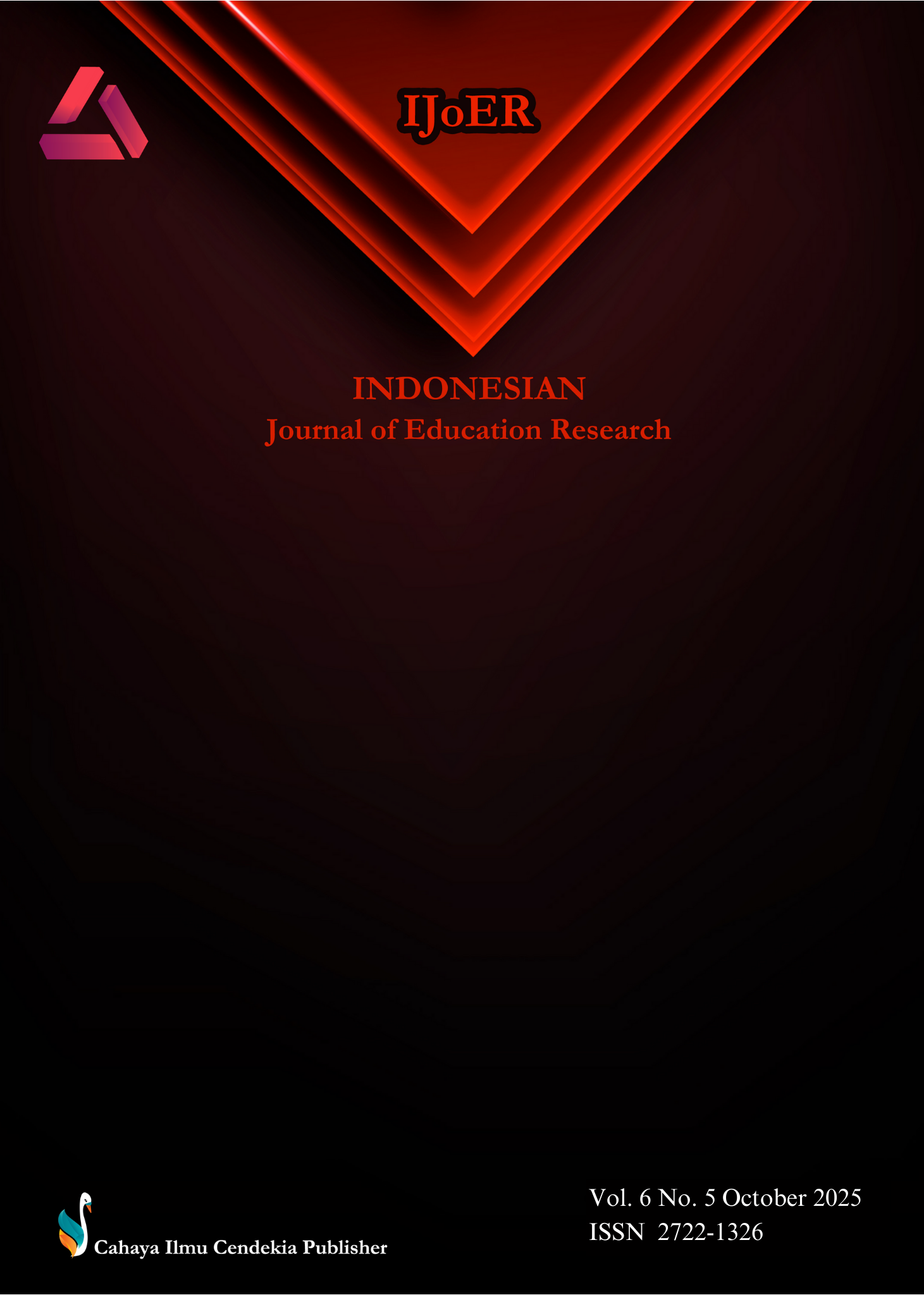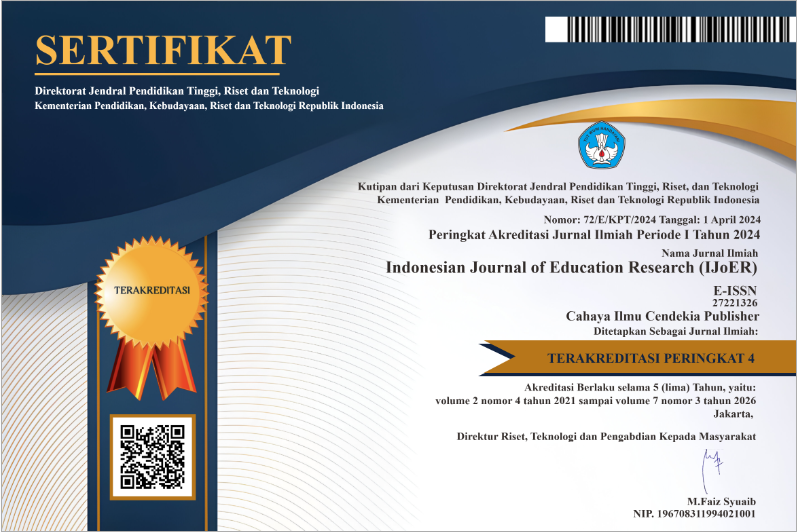Linking Exercise Self-Efficacy to Perceived Wellness: Implications for Student Well-Being in Higher Education
Abstract
Purpose of the study: This study aimed to examine the relationship between exercise self-efficacy and perceived wellness among Filipino college freshmen in Davao del Norte within the context of curriculum evaluation in physical education. It sought to assess students’ levels of exercise self-efficacy and perceived wellness as indicators of holistic development and to explore how these constructs inform program evaluation and learning outcomes in PE.
Methodology: The study used a quantitative-correlational research design involving 298 college freshmen enrolled in PE 1 – Movement Enhancement during the academic year 2023–2024. Data were collected using three adapted research instruments measuring exercise self-efficacy and perceived wellness. Descriptive statistics (mean) and Pearson product-moment correlation were used for data analysis.
Main Findings: The results showed that students had a moderate level of exercise self-efficacy and a high level of perceived wellness. A statistically significant positive relationship was found between exercise self-efficacy and perceived wellness, indicating that students with higher confidence in performing exercise tend to have better overall wellness.
Novelty/Originality of this study: This study uniquely evaluates the relationship between exercise self-efficacy and perceived wellness among Filipino college freshmen within an educational evaluation framework. By integrating the CIPP and Kirkpatrick models, it provides new insights into how exercise confidence contributes to holistic well-being.
References
R. M. Ryan and E. L. Deci, Intrinsic Motivation and Self-Determination in Human Behavior. New York, NY: Springer, 2020. doi: 10.1007/978-1-4899-2271-7
D. Mahatmya, B. J. Lohman, M. E. Brown, and J. Conway-Turner, “The Role of Student Wellness in the Transition to College: A Review,” J. Student Affairs Res. Pract., vol. 55, no. 1, pp. 75–88, 2018.
S. Wang and X. Hu, “Promoting Holistic Self-Care Among University Students: A Wellness-Centered Approach,” J. Higher Educ. Wellness, vol. 7, no. 2, pp. 45–60, 2023.
I. Savolainen, M. Kaakinen, A. Oksanen, and H. J. Paek, “Student Wellness in Higher Education: A Systematic Review,” Health Promot. Int., vol. 38, no. 1, 2023, doi: 10.1093/heapro/daac061.
A. Poots and T. Cassidy, “Academic Stress and Perceived Wellness Among University Students,” J. Am. Coll. Health, vol. 68, no. 5, pp. 528–534, 2020.
World Health Organization, Mental Health Atlas 2020. Geneva: WHO, 2020.
R. A. Egcas, R. H. D. Ybañez, G. M. B. Castaños, and M. Tampus, “Physical Activity and Mental Health Among Filipino University Students,” Asia Pac. J. Multidiscip. Res., vol. 9, no. 2, pp. 34–41, 2021.
L. G. Baria and M. P. Gomez, “Physical Activity Compliance Among College Students in Davao del Norte,” Philipp. J. Health Res. Dev., vol. 26, no. 1, pp. 51–60, 2022.
A. Bandura, “Self-Efficacy,” in Encyclopedia of Human Behavior, vol. 4, V. S. Ramachaudran, Ed. New York, NY: Academic Press, 1994, pp. 71–81.
C. L. Sidman, M. L. D’Abundo, and N. Hritz, “Exercise Self-Efficacy and Perceived Wellness Among College Students,” J. Am. Coll. Health, vol. 57, no. 3, pp. 321–326, 2009.
S. Y. Kim, S. H. Kim, and J. H. Park, “Exercise Self-Efficacy and College Student Physical Activity Engagement,” J. Am. Coll. Health, pp. 1–9, 2023.
W. P. Neace, “Mindfulness, Intrinsic Motivation, and Exercise Self-Efficacy Among College Students,” Mindfulness, vol. 13, no. 4, pp. 789–801, 2022.
J. M. Pituk, “Exercise Self-Efficacy and Wellness Among Filipino College Students: An Exploratory Study,” Philipp. J. Psychol., vol. 52, no. 1, pp. 25–39, 2019.
Commission on Higher Education, “Policies, Standards, and Guidelines for Physical Education Programs in Higher Education,” CMO No. 39, s. 2021.
M. J. A. Reyes, S. T. Atienza, and M. R. De Jesus, “Institutional Wellness Programs in Philippine HEIs: Implementation and Challenges,” Int. J. Educ. Dev., vol. 92, p. 102627, 2022.
J.-T. Hamilton-Ekeke, I. Thomas, and C. David, “Intellectual Wellness and Critical Thinking in Education,” J. Educ. Stud., vol. 18, no. 1, pp. 33–45, 2020.
S. Rutberg and C. D. Bouikidis, “Focusing on the Fundamentals: A Simplistic Differentiation Between Qualitative and Quantitative Research,” Nephrol. Nurs. J., vol. 45, no. 2, pp. 209–213, 2018.
S. J. Loeb, S. Dynarski, D. McFarland, P. A. Morris, S. Reardon, and S. Reber, Descriptive Analysis in Education: A Guide for Researchers. Washington, DC: Natl. Center for Educ. Eval., 2017.
S. L. Siedlecki, “Understanding Descriptive Research Designs,” Clin. Nurse Spec., vol. 34, no. 1, pp. 8–12, 2020, doi: 10.1097/NUR.0000000000000493.
P. C. Price, R. S. Jhangiani, and I. A. Chiang, Research Methods in Psychology, 3rd ed. BCcampus, 2015.
R. Jhangiani, Principles of Social Psychology. BCcampus OpenEd, 2019.
S. T. Johnson, G. J. Bell, L. J. McCargar, and W. M. Rodgers, “Psychological Correlates of Physical Activity Among Community-Dwelling Older Adults,” J. Aging Phys. Act., vol. 21, no. 2, pp. 140–154, 2013, doi: 10.1123/japa.21.2.140.
T. Nguyen, J. Sargeant, and A. Muijtjens, “Stratified Random Sampling in Educational Research,” Med. Educ., vol. 55, no. 6, pp. 700–707, 2021, doi: 10.1111/medu.14482.
T. Adams, J. Bezner, L. Garner, and S. Woodruff, “The Conceptualization and Measurement of Perceived Wellness: Integrating Balance Across and Within Dimensions,” Am. J. Health Promot., vol. 11, no. 3, pp. 208–218, 1997, doi: 10.4278/0890-1171-11.3.208.
C. J. Bebeley, R. C. Bonagua, and M. L. Rabago, “Physical Exercise Self-Efficacy and Motivation in Physical Activity Among College Students,” Int. J. Phys. Educ. Sports Health, vol. 4, no. 3, pp. 145–150, 2017.
A. Alyahya, A. Albarrati, A. Alsubiheen, A. Alghadir, and Z. A. Iqbal, “Exercise Self-Efficacy and Perceived Barriers of College Students,” Healthcare, vol. 9, no. 12, p. 1686, 2021, doi: 10.3390/healthcare9121686.
K. Bond, “The Relationship Between Exercise Self-Efficacy, Social Support, and Physical Activity Among College Students,” J. Am. Coll. Health, vol. 69, no. 6, pp. 684–691, 2021, doi: 10.1080/07448481.2020.1738373.
M. Gaim, “Managing Multiple Roles: Role Conflict, Enrichment, and Balance Among University Students,” Int. J. Educ. Res. Dev., vol. 6, no. 3, pp. 51–60, 2018.
A. Devereux-Fitzgerald, R. Powell, A. Dewhurst, and D. P. French, “The Acceptability of Physical Activity Interventions to Older Adults: A Systematic Review and Meta-Synthesis,” Soc. Sci. Med., vol. 158, pp. 14–23, 2016, doi: 10.1016/j.socscimed.2016.04.006.
B. Marroquín, H. Tennen, and A. L. Stanton, “Effects of Rumination and Distraction on Post-Event Processing of Negative Social Interactions,” J. Soc. Clin. Psychol., vol. 36, no. 5, pp. 370–388, 2017, doi: 10.1521/jscp.2017.36.5.370.
F.-E. Kinnafick, C. Thøgersen-Ntoumani, and J. L. Duda, “Physical Activity Adoption to Adherence, Lapse, and Dropout: A Self-Determination Theory Perspective,” Qual. Health Res., vol. 24, no. 5, pp. 706–718, 2014, doi: 10.1177/1049732314528811.
F. Dagenais and I. Savoie, “Psychological Wellness and Cognitive Functioning in Young Adults,” J. Mental Health Wellbeing, vol. 4, no. 2, pp. 123–130, 2012.
R. Hussain, M. Guppy, S. Robertson, and E. Temple, “Physical and Mental Health Perspectives of University Students,” Aust. J. Psychol., vol. 65, no. 1, pp. 41–47, 2013, doi: 10.1111/ajpy.12002.
A. Jara, M. Real, and J. Pérez, “Promoting Emotional Well-Being Through Participatory Interventions,” Emotional Health Rev., vol. 8, no. 3, pp. 201–209, 2014.
A. M. Grant, J. Franklin, and P. Langford, “The Self-Reflection and Insight Scale: A New Measure of Private Self-Consciousness,” Soc. Behav. Pers., vol. 30, no. 8, pp. 821–836, 2013.
M.-T. Wang and J. S. Eccles, “Social Support Matters: Longitudinal Effects of Social Support on Academic Motivation in Adolescence,” Child Dev., vol. 83, no. 3, pp. 877–895, 2012, doi: 10.1111/j.1467-8624.2012.01745.x.
K. R. Byrd and M. Kristen, “Social Wellness and Its Impact on Student Development,” J. Student Affairs Res. Pract., vol. 49, no. 1, pp. 65–77, 2012.
I. A. Lesser, “Understanding the Link Between Physical and Mental Health in Pandemic Settings,” Can. J. Public Health, vol. 111, no. 4, pp. 509–513, 2020.
J. Pretsch, B. Flunger, and M. Schmitt, “Resilience Predicts Well-Being and School Grades Under Stress: A Longitudinal Study With German Students,” Educ. Psychol., vol. 32, no. 3, pp. 349–360, 2012, doi: 10.1080/01443410.2012.669930.
F. A. Huppert, “Psychological Well-Being: Evidence Regarding Its Causes and Consequences,” Appl. Psychol. Health Well-Being, vol. 1, no. 2, pp. 137–164, 2009, doi: 10.1111/j.1758-0854.2009.01008.x.
M. G. Adler and N. S. Fagley, “Spiritual Well-Being and Life Purpose Among College Students,” J. Positive Psychol., vol. 16, no. 3, pp. 342–354, 2021, doi: 10.1080/17439760.2020.1725602.
C. L. Sidman, M. L. D’Abundo, and N. Hritz, “Exercise Self-Efficacy and Perceived Wellness Among College Students,” Recreat. Sports J., vol. 33, no. 2, pp. 167–177, 2009, doi: 10.1123/rsj.33.2.167.
L. A. Medrano, P. E. Flores-Kanter, and L. Moretti, “Physical Activity and Perceived Wellness in Emerging Adults: The Role of Self-Efficacy,” Health Psychol. Open, vol. 7, no. 2, pp. 1–9, 2020, doi: 10.1177/2055102920965056.
R. M. Ryan and E. L. Deci, Wellbeing: The Foundations of Hedonic and Eudaimonic Flourishing. New Haven, CT: Yale Univ. Press, 2020.
D. L. Stufflebeam, “The Relevance of the CIPP Evaluation Model for Educational Accountability,” J. Educ. Eval., 1971.
D. L. Kirkpatrick and J. D. Kirkpatrick, Evaluating Training Programs: The Four Levels, 3rd ed. San Francisco, CA: Berrett-Koehler, 2006.
M. Bond, “Facilitating Self-Efficacy in Education Through Reflective Practice and Goal-Setting,” J. Educ. Reflect. Pract., 2021.
Copyright (c) 2025 Michael Andrei Sameon, Bryan Paul Villarojo

This work is licensed under a Creative Commons Attribution 4.0 International License.
Authors who publish with this journal agree to the following terms:
- Authors retain copyright and acknowledge that the Indonesian Journal of Education Research (IJoER) is the first publisher licensed under a Creative Commons Attribution 4.0 International License.
- Authors are able to enter into separate, additional contractual arrangements for the non-exclusive distribution of the journal's published version of the work (e.g., post it to an institutional repository or publish it in a book), with an acknowledgment of its initial publication in this journal.
- Authors are permitted and encouraged to post their work online (e.g., in institutional repositories or on their website) prior to and during the submission process, as it can lead to productive exchanges and earlier and greater citation of published work.







.png)
.png)




















